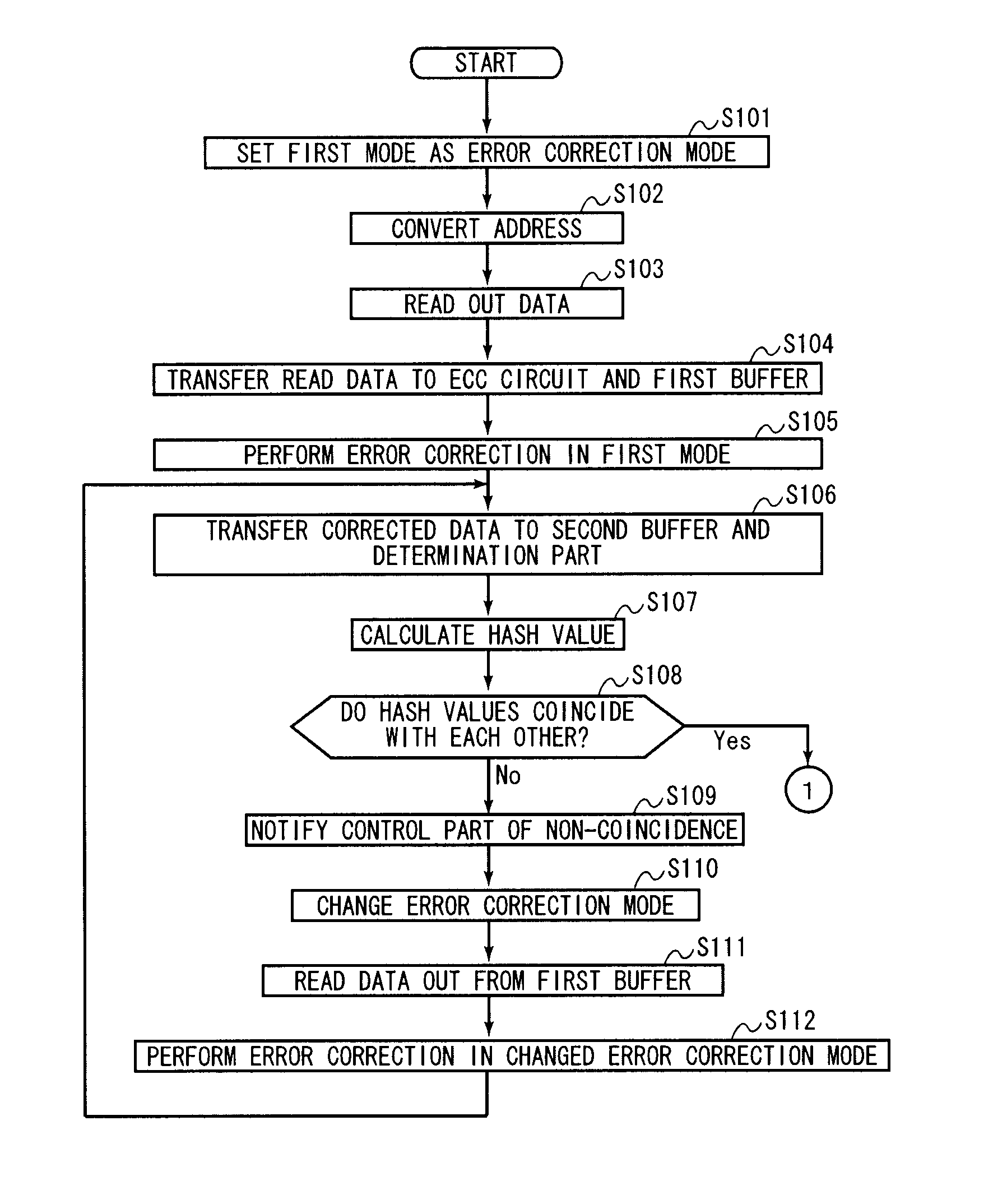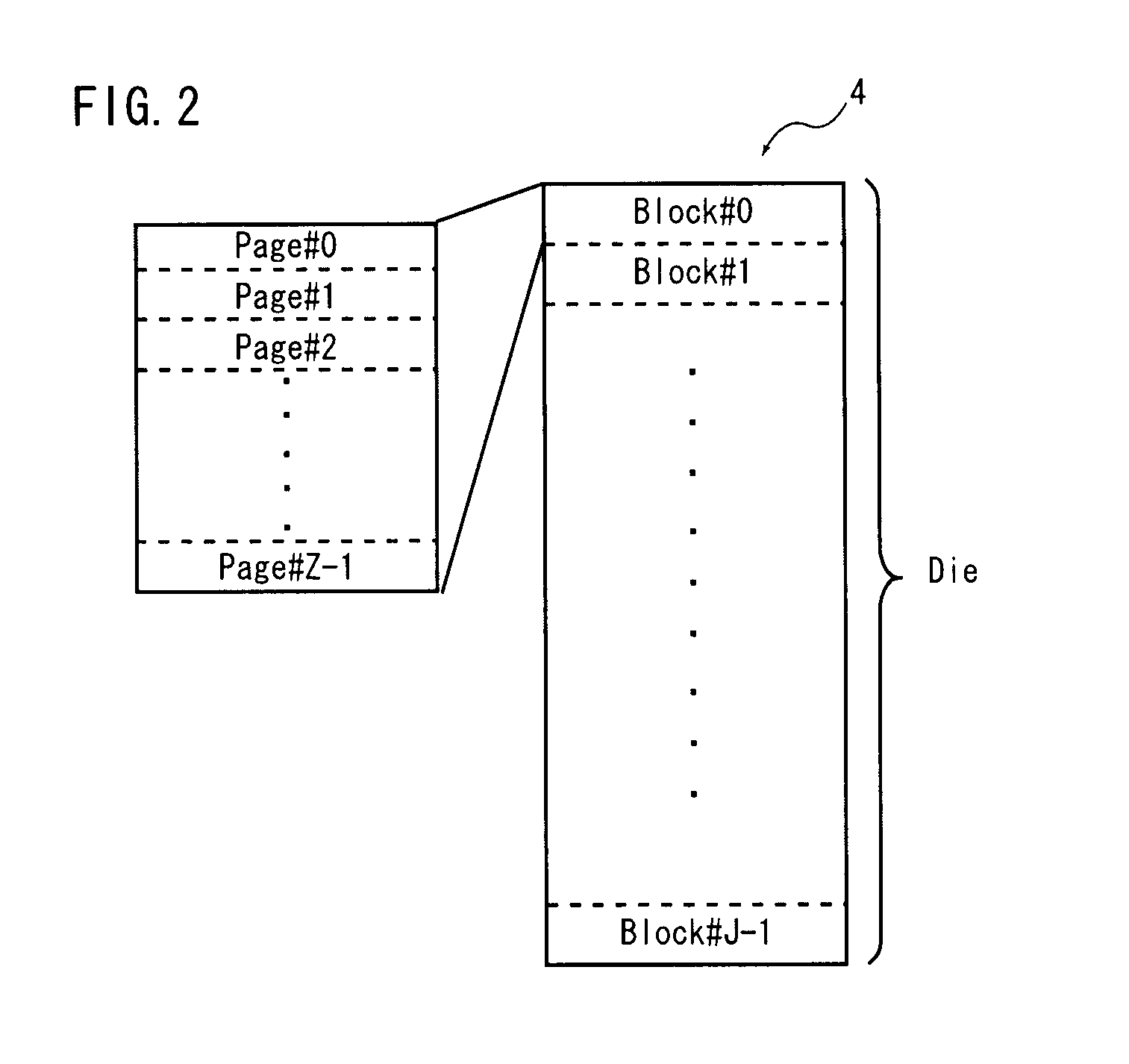Memory controller
a memory controller and controller technology, applied in the field of error correction techniques, can solve the problems of reducing the storage efficiency of information data in a memory, errors in written data in some cases, and errors in stored data, so as to increase the reliability of a semiconductor memory, without complicated data management and operation.
- Summary
- Abstract
- Description
- Claims
- Application Information
AI Technical Summary
Benefits of technology
Problems solved by technology
Method used
Image
Examples
Embodiment Construction
The First Preferred Embodiment
[0028]Hereinafter, with reference to figures, the first preferred embodiment of the present invention will be discussed.
[0029]{1. Overall Structure}
[0030]FIG. 1 is a functional block diagram showing a constitution of an information processing system 100 in accordance with the first preferred embodiment. The information processing system 100 comprises a host apparatus 1 and a memory system 2.
[0031]The host apparatus 1 is, for example, a PC (Personal Computer), a portable terminal, or the like. The memory system 2 is a USB (Universal Serial Bus) memory, a memory card, or the like, which is detachable / attachable from / to the host apparatus 1.
[0032]The memory system 2 comprises a memory controller 3 and a memory 4. The memory controller 3 writes / reads data into / from the memory 4 in response to a request of the host apparatus 1. In other words, the memory controller 3 controls access to the memory 4.
[0033]The memory 4 is a rewritable nonvolatile semiconductor...
PUM
 Login to View More
Login to View More Abstract
Description
Claims
Application Information
 Login to View More
Login to View More - R&D
- Intellectual Property
- Life Sciences
- Materials
- Tech Scout
- Unparalleled Data Quality
- Higher Quality Content
- 60% Fewer Hallucinations
Browse by: Latest US Patents, China's latest patents, Technical Efficacy Thesaurus, Application Domain, Technology Topic, Popular Technical Reports.
© 2025 PatSnap. All rights reserved.Legal|Privacy policy|Modern Slavery Act Transparency Statement|Sitemap|About US| Contact US: help@patsnap.com



